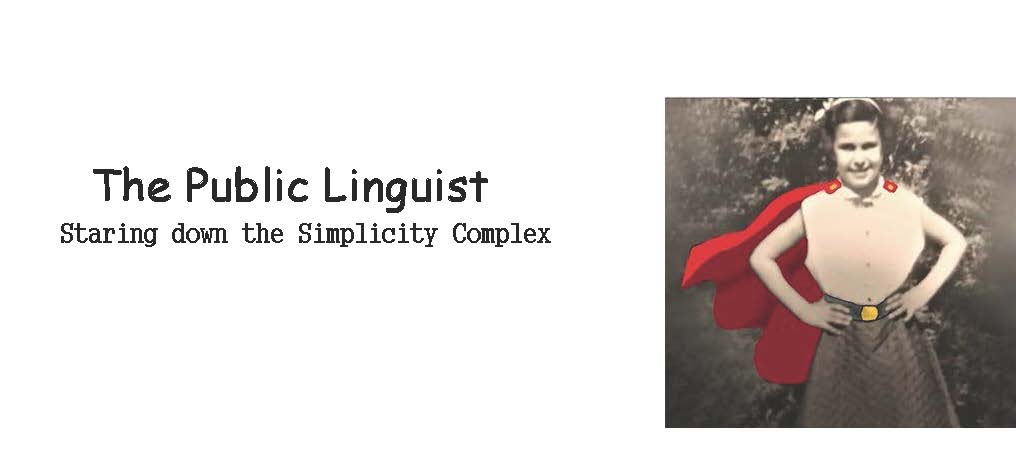Why do we keep expecting that clear and simple health messages about H1N1 (or any health issue) are going to motivate and prepare people to make good decisions to protect their health?
( from http://knowyourmeme.com/photos/13862 trying to confirm artist)
Let’s use the 3 universal H1N1 messages that most experts (federal, local) have hammered away at since last Spring:
1. Wash hands thoroughly and frequently with soap and water
2. Avoid contact with people who are obviously sick
3. If you get sick with any cold or flu, stay home from work or school; avoid contact with others as much as possible
New York City Office of Emergency Management http://www.nyc.gov/html/oem/html/home/home.shtml
These are directives or precaution sound bites. And like all such directives - “Don’t eat the fish from this river.” …”Take all of this medication,” they reflect 3 important assumptions we make about people:
- The receiver trusts the messenger and is predisposed to follow instructions
- The receiver understands enough of the underlying health/science concept to judge the messages import
- The receiver has the means to do what the message is directing
Example:
Yesterday the Washington Post (10/17/09) reported on the now clearer links to deadly pneumonia. (my use of color in text)
“Seasonal flu viruses tend to infect primarily the upper respiratory system. But recent animal studies and autopsies on about 100 swine flu victims show that H1N1 infects both the upper respiratory tract, which makes it relatively easy to transmit, and also the lungs, which is more similar to the avian flu virus that has been circulating in Asia.
"It's like the avian flu on steroids," said Sherif Zaki, chief of Infectious Disease Pathology at the CDC. He noted that unusually large concentrations of the swine flu virus have been found in the lungs of victims: "It really is a new beast, so to speak."
There is nothing in the 3 precautionary sound bites that prepares the public to understand, in lay person’s terms, the import of scientists’ universal concern about H1N1.
So - A Proposal for Post-Modern Approach to Public Health Literacy
1. Let’s just suppose, for argument’s sake, that we put aside a core belief in the field of health literacy and public health communication that has spread, virus like over the last 20 years. The questionable assumption is that simplifying information is the primary solution to an uninformed and low health literacy.
2. Let’s entertain the idea that universal simplifying of all health messages is not the solution it’s cracked up to be. That “simplifying” has over-promised.
Much that passes for “clear and simple” health information is badly conceived and poorly composed. It deletes out most evidence salient to consumers, leaving staccato, look like sentences that create yawning inferential gaps most people simply can’t fill.
3. Let’s also assume that this basic tenet - simplify, simplify, simplify - has yielded public health communication by subtraction. Over the last few months public health communicators have backgrounded vital health literacy concepts - how viruses are ingenious in mission to stay alive, the import of their changing, why scientists care about changes in a virus, how global health surveillance works, what scientists are watching for…
We background all of these core “scientific” facts and then wonder why almost 40% of parents don’t intend to vaccinate their young children; and millions of adults joined them in this ambivalence.
Where would that leave us?
For starters, we would find ourselves talking less about “low or inadequate health literacy” of patients and the public, and forced to talk more about the specific health literacy skills and abilities people do have and are using to make their decisions every day.
Actually talk about how parents are understanding H1N1 and the vaccine.
How they talk to their friends and family.
Then use this discourse, these ways of knowing to find common ground to talk to them about what we know.
The more I track the messages about H1N1 the public is getting, the more I am convinced that the consequences are we may very well be perpetuating limited access to the complex and nuanced information necessary for patients and publics to make informed decisions about health and risk. And, as importantly, un-tempered and unquestioned surface level simplification is perpetuating a disequity in access to the larger information commons. Neither is a very good result.


Grateful and relieved to see a sociolinguist weighing in on health literacy issues. I'm posting this to Twitter.
ReplyDeleteI appreciate your thoughts on this health literacy issue. I think health professionals may need to find ways to communicate in less scientific or clinical ways. If you were sitting with your best friend having coffee and explaining H1N1, what would you say and how would you say it? The communication itself needs to be compelling and relatable. -Helene Fisher, Co-Founder, Say Ah!, Inc. www.justsayah.org
ReplyDelete